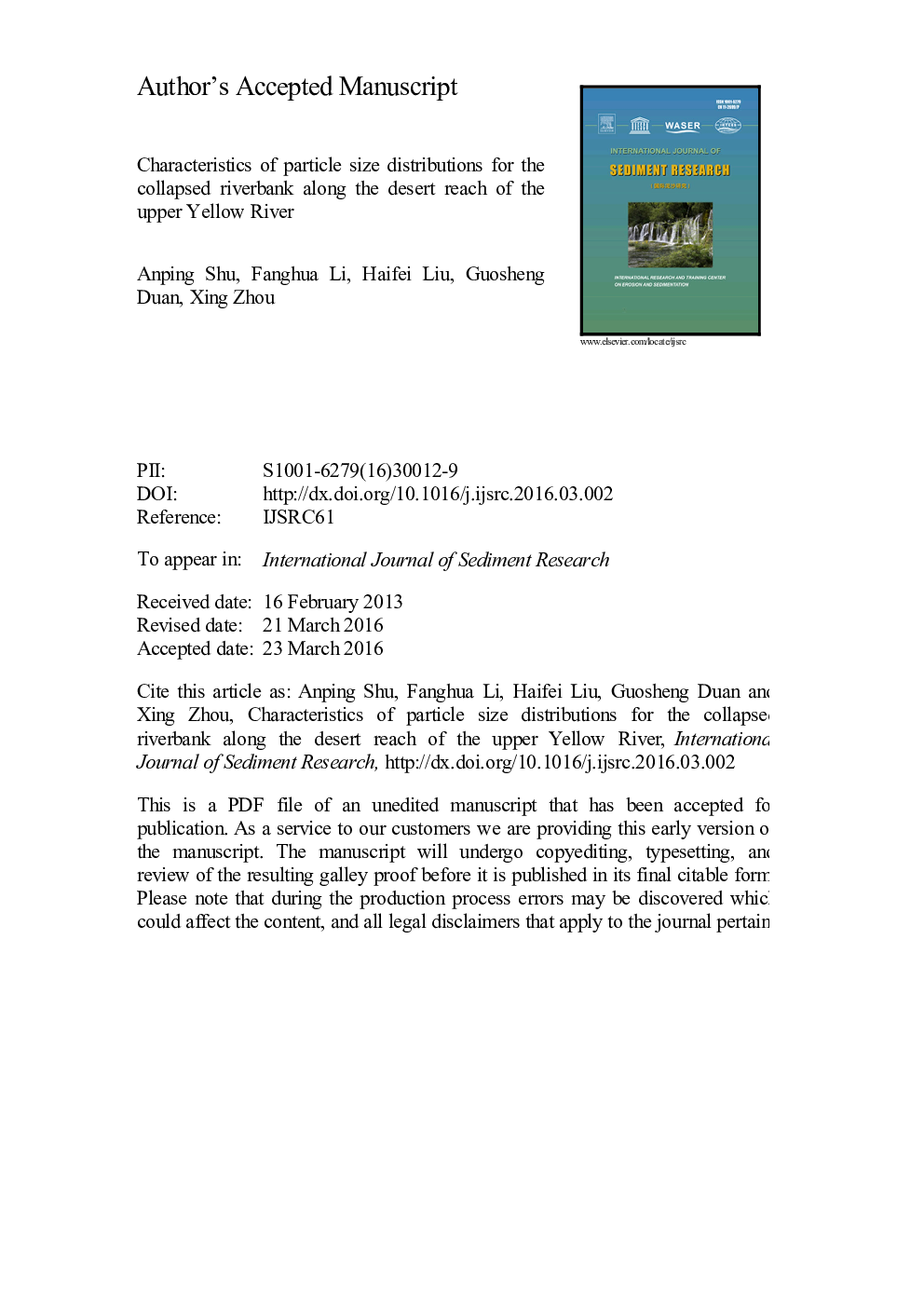| Article ID | Journal | Published Year | Pages | File Type |
|---|---|---|---|---|
| 8911215 | International Journal of Sediment Research | 2016 | 34 Pages |
Abstract
As a result of the interaction between hydrodynamics and the effects of gravity, riverbank collapse is a common occurrence in the desert reach of the upper Yellow River (also called as Ningxia-Mongolia Inner reach), of which the riverbank may be divided into three types such as sandy riverbank in the wide-valley desert reach, silt-deposition riverbank on the fluvial plain and silt-sandy riverbank. The characteristics of both typical riverbank collapse and the particle size distributions (PSDs) for collapsed riverbanks of sandy, silt-deposition, and silt-sandy types were determined from analysis of data obtained from the field observations. It was found that particles from the silt-deposition riverbank had the smallest median size and those from the sandy riverbank the largest, with those from the silt-sandy riverbank being intermediate in size. The PSDs of the sandy and silt-deposition riverbanks exhibited double-peaked and single-peaked structures, respectively, while those of the silt-sandy riverbank exhibited multiple peaks. Furthermore, the corresponding to three kinds of riverbank collapse mechanisms were revealed. These results are significant with regard both to the understanding of river dynamics and to the planning of river harnessing projects.
Related Topics
Physical Sciences and Engineering
Earth and Planetary Sciences
Geochemistry and Petrology
Authors
Anping Shu, Fanghua Li, Haifei Liu, Guosheng Duan, Xing Zhou,
